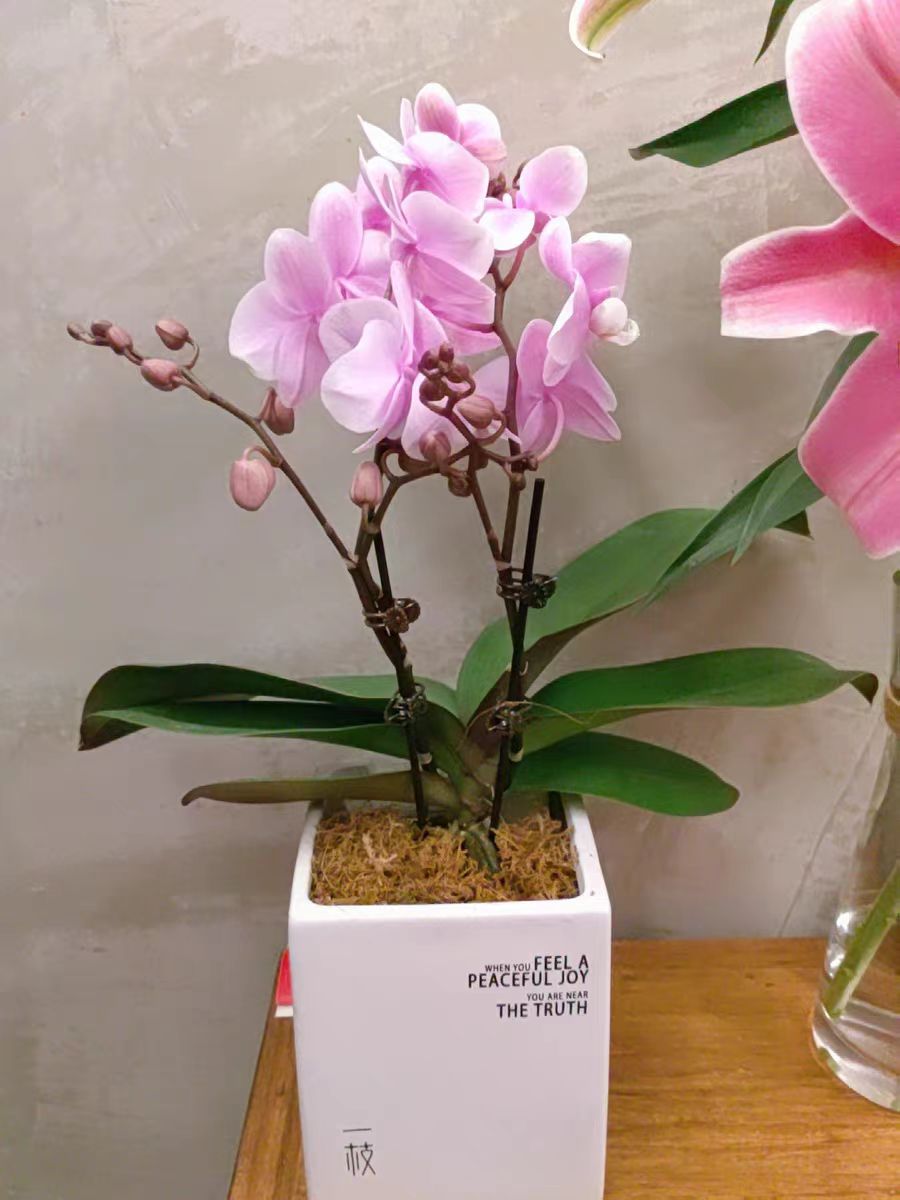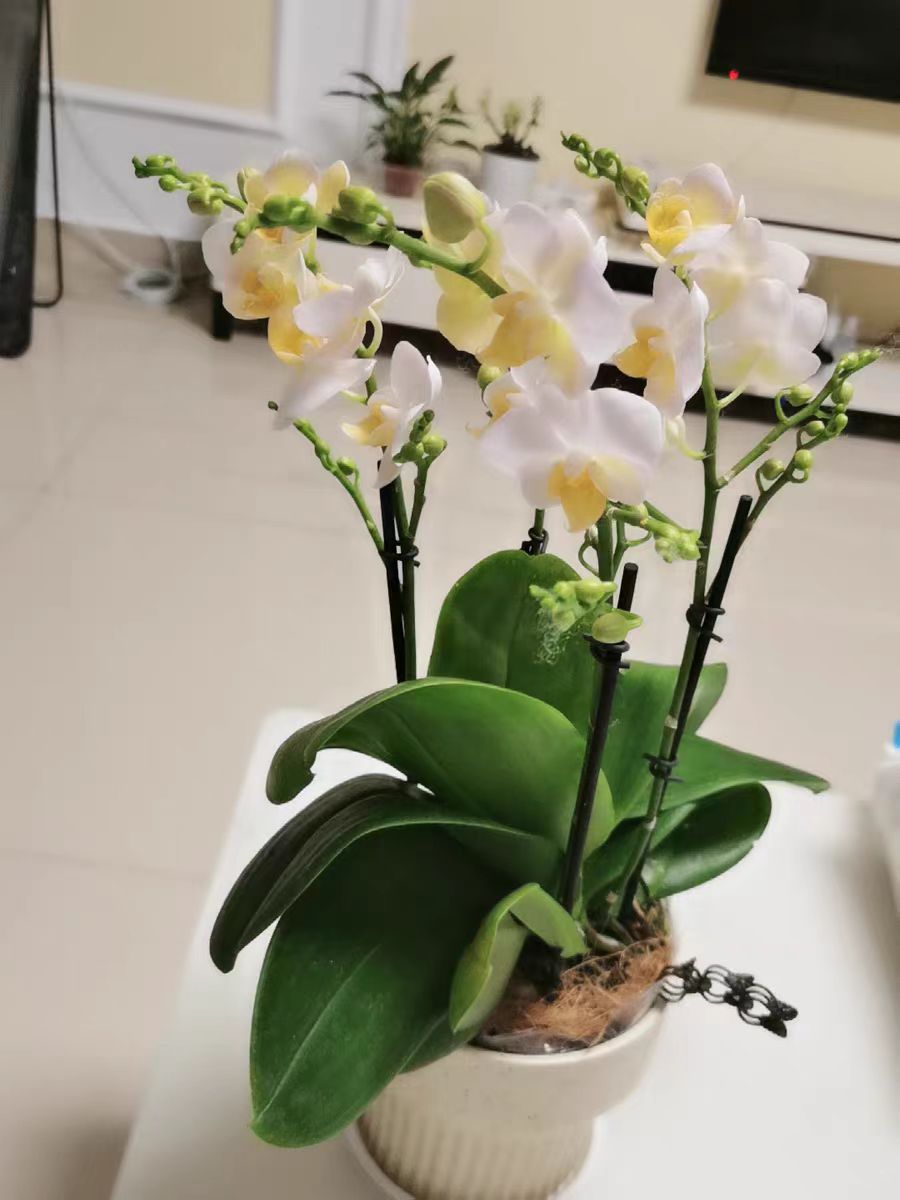Phalaenopsis orchids hold a special place in the hearts of flower enthusiasts. When they enter the dormant period, a series of changes can puzzle many novice flower growers. Understanding what a Phalaenopsis orchid looks like during dormancy and whether it is possible to repot it during this period is crucial for its healthy growth.
When a Phalaenopsis orchid is dormant, the most obvious change is in its growth rate. It used to actively sprout new leaves and flower stems, but now it seems to have pressed the pause button. New leaves stop growing, and no new flower stems emerge. The plant enters a relatively static period. In terms of leaf condition, some old leaves may gradually turn yellow and wither. This is not a disease caused by improper maintenance, but an adjustment of the Phalaenopsis orchid's own metabolism. It is recycling the nutrients in the old leaves and storing them for future growth. At the same time, the growth activity of the roots also slows down. Close observation will show that the white root tips that originally kept stretching and exploring new spaces are no longer active, and the ability of the roots to absorb water and nutrients is weakened. This is also an important reason for the overall slowdown of the plant's growth.
When a Phalaenopsis orchid is in a dormant state, many flower growers will wonder whether it is possible to repot it. The answer is to avoid repotting during the dormant period as much as possible. During the dormant period, the physiological functions of the Phalaenopsis orchid are relatively fragile, and its ability to adapt to environmental changes decreases. Repotting means moving the plant out of its original familiar growth environment and replanting it in a new flower pot with new planting material. This process will inevitably cause some damage to the roots. The self - repair ability of the roots during the dormant period is weak, and it is difficult for them to recover quickly after being injured. This can easily lead to problems such as root rot. Once the roots are severely damaged, they cannot provide sufficient water and nutrients for the plant, which may lead to poor growth of the entire plant and even death.
In addition, the new environment after repotting, whether it is the acidity and alkalinity, air permeability, humidity, or temperature of the planting material, needs to be readapted to by the Phalaenopsis orchid. During the dormant period, the plant itself is in a growth - stagnant state and does not have enough energy to cope with these environmental changes. For example, if the air permeability of the new planting material is poor, and the root respiration is already weak during the dormant period, it will further affect the normal function of the roots and make it difficult for the plant to survive the dormant period smoothly.
If it is really necessary to repot, for example, if the flower pot is severely damaged, or the planting material has become severely compacted and cannot breathe or drain water, then it must be done when the dormant period is about to end and the plant begins to show signs of recovery. Be especially careful during the operation to minimize damage to the roots. Gently remove the Phalaenopsis orchid from the old pot without forcibly pulling the roots. Keep some of the original soil around the roots, and then plant it in the prepared new pot. The new planting material should be well - ventilated and well - drained, such as sphagnum moss, bark, etc. After repotting, place the Phalaenopsis orchid in a warm, ventilated place with soft light, and temporarily reduce watering and fertilization to allow the plant to slowly adapt to the new environment.
When a Phalaenopsis orchid is dormant, its growth stagnates, its old leaves turn yellow, and the activity of its roots slows down. In principle, repotting is not recommended during the dormant period. With this knowledge, flower growers can take better care of Phalaenopsis orchids and help these beautiful flowers thrive under proper care.
What does a dormant Phalaenopsis orchid look like?

Share with
Tagged in :




Leave a Reply